Adrian Tchaikovsky's Blog, page 2
May 2, 2019
Well that was a long old gap.
So I was at Eastercon last weekend where John Scalzi was guest of honour, and he was talking about people’s blog sites being basically a post that says “And I shall write more regular blog posts in the future” and then nothing for the next seven years, and I felt called out, I say, called out!
So here is the guilt-inspired blog post, mostly to say, I ain’tn’t dead, but I have been making words happen. You may have seen Cage of Souls in the wild (copy shown below with reference Octopus (1)). There have also been a few copies of Walking to Aldebaran and even Cage of Souls around – certainly some made the book stalls at Eastercon, although both are officially only out later this month. If you would like signed copies of these books, then they exist at Forbidden Planet and Goldsboro Books – who in fact should probably be able to get you any or all these releases.
My time since the last post has been dedicated to (1) new novella, and (2) first ep of a proposed space opera series, the first draft of which I’ve just finished, and which turned out to be huge fun to write. And only contains about double the recommended daily dose of cyborg insect hive minds.
Next up, seeing as I’m sitting here actually writing a blog post, reading recs in brief.
84K by Claire North is the most terrifying near future dystopia I’ve read, because there is absolutely nothing in it that isn’t plausible. An ultra-capitalist economic collapse where everyone has a quantifiable worth, and the worth of most people is zero, it even includes a road map to show how we get from here to there, and I reckon several steps have actually been taken since the book was published. An incredible but traumatic read.
Emma Newman’s Atlas Alone is another phenomenal instalment in her series – less standalone than the last three (although some time we must discuss the different reading experiences if you come to Before Mars with or without having read its predecessors) and another keen insight into human psychology, dystopia capitalist society (odd how that’s a theme, right?) and a future that’s both bleak and recognisable.
Aliette de Bodard’s The Tea Master and the Detective is a lovely little SF detective novella, Sherlock Holmes in her Dai Viet space setting, with a grumpy ex-military spaceship for a Watson.
Also RJ Barker’s The Bone Ships is going to be incredible but I have an advanced copy and it’s not going to be out for months, and hopefully I will remember to talk about it at a more useful point in time.
And congratulations to Gareth Powell whose excellent Embers of War won the BSFA best novel award this year, out of a very strong field.
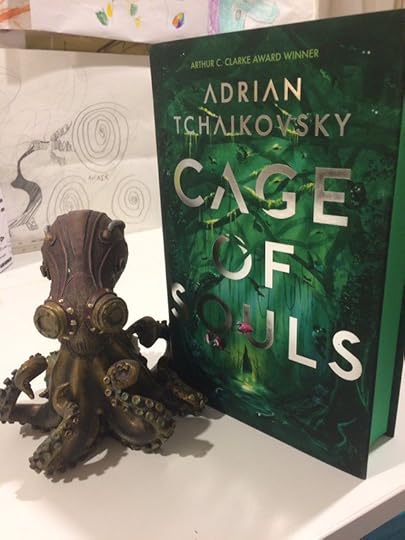
(1) Apologies to Shut Up and Sit Down‘s reference pear. Also, this is the Forbidden Planet green-edged special edition.
December 11, 2018
Leaping Into the Void
Well I said I was going to do a casting call for Ironclads, and I shall, but something else has transpired that’s probably worth a brief comment. As of a week or so ago, I am officially a full-time writer.
(fanfare)
As is probably fairly well known, I’ve had a day job as a lawyer for a good long while – 15 years, with the last few years being gradually more part-time as the writing took off. A few months back, having taken a fairly hard look at financial realities, I took the big step of handing in my notice.
This is not so much me flag-waving and blowing my own trumpet, to be honest. It is a terrifying step, and there’s every chance that in a couple of years I’ll be going cap in hand for more regular work. However, right now, after ten years before the writing mast and a particularly well-received book about spiders, it’s a realistic proposition. I consider myself indecently lucky even to have the opportunity.
What can be expected, as far as writing output goes? Likely more short stuff, including novellas. Probably not six full length novels a year or anything insane like that – I think there’s a hard limit to my writing output as I tend to write in short bursts and then brew up the next section in the back of my head before sitting back down again.. Most likely my actual prose output will remain fairly constant (I hope. However this will mean that when edits arrive, or other non-creative parts of the writing process, it won’t drive a truck through my writing flow because I won’t have to down tools to get them done by deadline. There’s also the possibility of other media, should opportunities come along. I’ve always been keen to write for comics, for example, and who knows what the future holds?
As a sideline, I certainly intend to update the blog more often, probably alongside a face lift to the website and possibly a newsletter for those who might be interested. On that line, if there’s anything in particular that people particularly want to see an author talking about, other than actual books – writing advice, more book recs, conventions, interminable anecdotes about playing board games – then drop me a line.
November 18, 2018
Not dead yet! plus Ironclads (fake) casting call
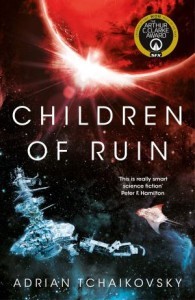 Been a ridiculously long time since the last post, but I have had 2 rounds of edits on both Children of Ruin (May 2019) and Cage of Souls (April 2019) and frankly am probably about to get slapped with the same for Walking to Aldabaraan (Also May?) – thankfully I have Civilian Reader about to actually tell people what’s going on, so please do check out their post here. I am a terrible self-publicist. It’s what they should put on my grave, although right at the bottom in tiny print.
Been a ridiculously long time since the last post, but I have had 2 rounds of edits on both Children of Ruin (May 2019) and Cage of Souls (April 2019) and frankly am probably about to get slapped with the same for Walking to Aldabaraan (Also May?) – thankfully I have Civilian Reader about to actually tell people what’s going on, so please do check out their post here. I am a terrible self-publicist. It’s what they should put on my grave, although right at the bottom in tiny print.
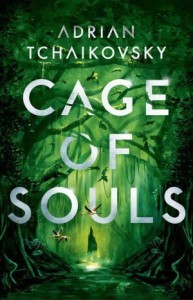 Having got the proofs of Ruin and Souls both off, the next time I should see them is when I get my author copies through, so that’s a grand relief. I am reasonably cheered by the fact that I did still enjoy reading through them for proof corrections, which isn’t always the case once you’ve had to go through a text that many times. Ruin is of course the sequel to Children of Time and, if you’re here, hopefully that needs no more introduction. Cage of Souls is a standalone far-future post-tech piece, about the last city of humans living with a dying Earth and a dying sun, caught between the forces of nature run mad, and a society that is busy tearing itself apart when it isn’t throwing all its energy into ridiculous distractions. So, you know, complete fantasy then.
Having got the proofs of Ruin and Souls both off, the next time I should see them is when I get my author copies through, so that’s a grand relief. I am reasonably cheered by the fact that I did still enjoy reading through them for proof corrections, which isn’t always the case once you’ve had to go through a text that many times. Ruin is of course the sequel to Children of Time and, if you’re here, hopefully that needs no more introduction. Cage of Souls is a standalone far-future post-tech piece, about the last city of humans living with a dying Earth and a dying sun, caught between the forces of nature run mad, and a society that is busy tearing itself apart when it isn’t throwing all its energy into ridiculous distractions. So, you know, complete fantasy then. 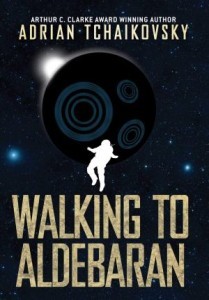 Walking to Aldabaraan is a new novella from the same house that brought you Ironclads. This one is about Gary Rendell, astronaut, part of a multinational mission to an inexplicable alien object found out around the orbit of Pluto, who ends up cut off from his fellows in the endless twisty workings of the place, trying to find his way back to anywhere he knows. It’s something I really had fun writing, unregenerate sadist that I apparently am. No astronauts were harmed in the making of this book.
Walking to Aldabaraan is a new novella from the same house that brought you Ironclads. This one is about Gary Rendell, astronaut, part of a multinational mission to an inexplicable alien object found out around the orbit of Pluto, who ends up cut off from his fellows in the endless twisty workings of the place, trying to find his way back to anywhere he knows. It’s something I really had fun writing, unregenerate sadist that I apparently am. No astronauts were harmed in the making of this book.
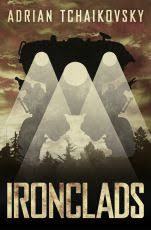 Finally, let’s impose an obligation on myself to get the next blog post out in a more timely fashion. Speaking of Ironclads it occurred to me that I never did a spurious casting call (you know, for the film nobody’s making), so please message me or post below with your suggestions for the characters therein, specifically the three US servicemen, Regan, Sturgeon and Franken, drone specialist Cormoran, UK infiltrator Lawes, Finnish special forces monster Viina, and maybe some secondary characters like Jerome Speling, Overste Rurisksdottir and Genaddy Osipov. I’ll try to get the actual final casting up in the first week of December or thereabouts.
Finally, let’s impose an obligation on myself to get the next blog post out in a more timely fashion. Speaking of Ironclads it occurred to me that I never did a spurious casting call (you know, for the film nobody’s making), so please message me or post below with your suggestions for the characters therein, specifically the three US servicemen, Regan, Sturgeon and Franken, drone specialist Cormoran, UK infiltrator Lawes, Finnish special forces monster Viina, and maybe some secondary characters like Jerome Speling, Overste Rurisksdottir and Genaddy Osipov. I’ll try to get the actual final casting up in the first week of December or thereabouts.
September 8, 2018
Form Complimenting Theme — two new games
I've had some deliveries from Kickstarter recently, including a few that have absolutely floated my boat in terms of both look and mechanics. It's a rare and beautiful thing when a game's theme is comprehensively supported by the way it plays, and I wanted to flag up a couple in case readers who like this sort of thing haven't come across them. These will both be available to the general very shortly, I believe.
 Overlight (RPG) — Renegade Studios
Overlight (RPG) — Renegade Studios
I originally backed this game just because it promised to be absolutely beautiful. Getting the art right is probably the most important thing for anyone crowdfunding a game – good art suggests, at least, a good game, and the pictures are worth the proverbial amount of words when it comes to communicating to potential players what playing that game will feel like.
Overlight is indeed one of the most visually appealing and colourful RPG books I’ve acquired – and this in an age where RPG art is effortlessly superb as standard in many games, whether it’s the intricate representational art of someone like Wayne Reynolds’ Pathfinder work, or the Mignola-like stylised pieces Adrian Stone has produced for Spire. What is more striking, reading the book, is that the colourful art is not just garnish – the setting revolves about the magic of light and colours and everything, from its bizarre geography to its very system, reflects this.
System matching setting is a topic in and of itself in game design. There are plenty of generic systems out there that seek to bring a particular style of play to multiple settings – GURPS and Savage Worlds are two good examples. I have a particular fondness for systems that are integrally bound to the worlds they seek to represent, though. Ars Magica’s freeform (and complex) magic system, say, or the tons-of-armour-and-buckets-of-dice approach to combat damage in Pendragon, which always brought over for me the sheer mass involved in charging about on a big horse in several hundredweight of plate.
Overlight is set in a world broken into seven shards, floating island stacked one above another, with a divine light above and an endless sea below. The divine light fragments as it goes down so that each shard is dominated by a particular colour of light, that also represents a particular virtue that dominates its culture. These virtues (six plus the wild card Spirit represented by unprismed white light) are also the character stats leading to the unusual situation where a certain amount of the game system actually exists in the philosophy of the characters governed by it. In this setting, players are Skyborn, touched by the Overlight and able to manipulate it to unleash magical powers of various kinds, themed to the virtues and to the different shards. As a nice touch, every Skyborn has a core virtue, but it can’t be the virtue of your home shard – Skyborn are inherently outsiders, cut off from their home, and again the system supports the setting. The magnificent art is by Kwanchai Moriya and lends a great deal to the feel of the game (see the image above).
There are also a number of other fun things – using powers costs a variable amount of Spirit, based on a bonus die that gets rolled with everything. Overspend on a power and you suffer shattering, a traumatic event that leaves you permanently marked – but not by a random roll on a table, instead every power has thematically appropriate (and sometimes actually beneficial) effects that get more pronounced with each shatter until the power burns out entirely.
The other thing Overlight manages to avoid is the twee – with all,the bright colours, and virtue-themed shards containing various human and non-human Folk, it might have ended up like some kind of hallucinatory Saturday morning cartoon. There is plenty of serious material for story there, though. Every shard has its own hooks for drama and there’s a lot of useful nastiness worked into the beliefs and practices of the various cultures: slavery, wars of extermination, commercial exploitation and more. Overall, Overlight has gone right to the top of the list of Games I Want to Play/Run But Haven’t Had the Chance (and there’s a whole extra blog post there).
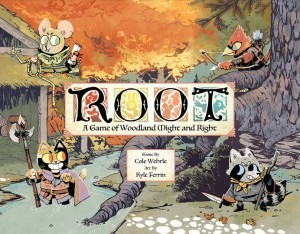 Root (board game) — Leder Games
Root (board game) — Leder Games
I backed a few boardgames late last year, and this has probably been the most fiercely anticipated. Root is, basically, a game of delightful woodland creatures being horrible to each other. Will you be the Marquise de Cat, new ruler of the forest, or the Eyrie Dynasty, the ousted former lords now coming back with a vengeance. Will you be the oppressed Woodlands Alliance fighting to free the woods from everyone’s tyranny, or the Vagabond who’s… a racoon or other solitary animal wandering about doing quests and exploring ruins while everyone else tries to have a war around them. (And there is also a mercantile faction of beavers and a sinister lizard cult in the expansion, as well as variant vagabonds). Root is also a game defined by its art, by Kyle Ferrin, which you can see to the right.
There is some commonality to these factions: the board is a series of linked clearings in the forest, the clearings have suits (fox, mouse, bunny) and so do the cards everyone uses, and matching one to the other is important much of the time. Fighting and moving follow common rules and the play who hits 30 points on the common score track wins. And that’s where the commonality ends because every faction plays completely differently and scores points for different things. The Cat is trying to amass resources and build things for points. The martial Eyrie has a rigid society decree that must be followed, and that gets added to every turn, so that their entire society runs to an increasingly unwieldy program and, if they can’t follow it, they depose their leader and fall into turmoil. The Alliance spreads sympathy across the board, gaining more whenever the forest folk are oppressed, and then erupts out into open revolt when the time is right. The vagabond helps or hinders the other factions, either slaughtering their soldiers or winning hearts and minds to the point where they can just waltz off with someone else’s troops. This is not a very complex game so much as several moderately complex games all running at the same time on the same board, and it’s glorious, and extremely well balanced.
And somehow, in all of this lunatic meshing of moving parts, Root manages to use its mechanics to reinforce the feeling of the various factions. When the Alliance spreads sympathy (its major points scorer and prelude to rebellion), for example, it then gains more supporters when that sympathy is destroyed, or when enemy troops turn up in sympathetic clearings – easy to envisage the rabbits and mice and foxes scowling and muttering as news of the latest atrocity comes in, or as the Cat’s soldiers turn up and kick over the market stalls. When, as the Eyrie leader, you realise you’ve promised your people that, yes, we will fight in a rabbit clearing this turn, except the only way to do that is to send some poor schmuck to their death, but hey, have to keep your campaign promises, right – as the bird leader you’re playing against the expectations of your judgmental people as much as against the other players, just like a real politician.
There’s a lot of depth to Root that I’ve not been able to get to yet – I haven’t tried the riverfolk or the lizards yet. This is definitely my favourite new boardgaming experience of the last year, though.
Form Complimenting Theme – two new games
I’ve had some deliveries from Kickstarter recently, including a few that have absolutely floated my boat in terms of both look and mechanics. It’s a rare and beautiful thing when a game’s theme is comprehensively supported by the way it plays, and I wanted to flag up a couple in case readers who like this sort of thing haven’t come across them. These will both be available to the general very shortly, I believe.
 Overlight (RPG) – Renegade Studios
Overlight (RPG) – Renegade Studios
I originally backed this game just because it promised to be absolutely beautiful. Getting the art right is probably the most important thing for anyone crowdfunding a game – good art suggests, at least, a good game, and the pictures are worth the proverbial amount of words when it comes to communicating to potential players what playing that game will feel like.
Overlight is indeed one of the most visually appealing and colourful RPG books I’ve acquired – and this in an age where RPG art is effortlessly superb as standard in many games, whether it’s the intricate representational art of someone like Wayne Reynolds’ Pathfinder work, or the Mignola-like stylised pieces (NAME) has produced for Spire. What is more striking, reading the book, is that the colourful art is not just garnish – the setting revolves about the magic of light and colours and everything, from its bizarre geography to its very system, reflects this.
System matching setting is a topic in and of itself in game design. There are plenty of generic systems out there that seek to bring a particular style of play to multiple settings – GURPS and Savage Worlds are two good examples. I have a particular fondness for systems that are integrally bound to the worlds they seek to represent, though. Ars Magica’s freeform (and complex) magic system, say, or the tons-of-armour-and-buckets-of-dice approach to combat damage in Pendragon, which always brought over for me the sheer mass involved in charging about on a big horse in several hundredweight of plate.
Overlight is set in a world broken into seven shards, floating island stacked one above another, with a divine light above and an endless sea below. The divine light fragments as it goes down so that each shard is dominated by a particular colour of light, that also represents a particular virtue that dominates its culture. These virtues (six plus the wild card Spirit represented by unprismed white light) are also the character stats leading to the unusual situation where a certain amount of the game system actually exists in the philosophy of the characters governed by it. In this setting, players are Skyborn, touched by the Overlight and able to manipulate it to unleash magical powers of various kinds, themed to the virtues and to the different shards. As a nice touch, every Skyborn has a core virtue, but it can’t be the virtue of your home shard – Skyborn are inherently outsiders, cut off from their home, and again the system supports the setting.
There are also a number of other fun things – using powers costs a variable amount of Spirit, based on a bonus die that gets rolled with everything. Overspend on a power and you suffer shattering, a traumatic event that leaves you permanently marked – but not by a random roll on a table, instead every power has thematically appropriate (and sometimes actually beneficial) effects that get more pronounced with each shatter until the power burns out entirely.
The other thing Overlight manages to avoid is the twee – with all,the bright colours, and virtue-themed shards containing various human and non-human Folk, it might have ended up like some kind of hallucinatory Saturday morning cartoon. There is plenty of serious material for story there, though. Every shard has its own hooks for drama and there’s a lot of useful nastiness worked into the beliefs and practices of the various cultures: slavery, wars of extermination, commercial exploitation and more. Overall, Overlight has gone right to the top of the list of Games I Want to Play/Run But Haven’t Had the Chance (and there’s a whole extra blog post there).
 Root (board game) – Leder Games
Root (board game) – Leder Games
I backed a few boardgames late last year, and this has probably been the most fiercely anticipated. Root is, basically, a game of delightful woodland creatures being horrible to each other. Will you be the Marquise de Cat, new ruler of the forest, or the Eyrie Dynasty, the ousted former lords now coming back with a vengeance. Will you be the oppressed Woodlands Alliance fighting to free the woods from everyone’s tyranny, or the Vagabond who’s… a racoon or other solitary animal wandering about doing quests and exploring ruins while everyone else tries to have a war around them. (And there is also a mercantile faction of beavers and a sinister lizard cult in the expansion, as well as variant vagabonds).
There is some commonality to these factions: the board is a series of linked clearings in the forest, the clearings have suits (fox, mouse, bunny) and so do the cards everyone uses, and matching one to the other is important much of the time. Fighting and moving follow common rules and the play who hits 30 points on the common score track wins. And that’s where the commonality ends because every faction plays completely differently and scores points for different things. The Cat is trying to amass resources and build things for points. The martial Eyrie has a rigid society decree that must be followed, and that gets added to every turn, so that their entire society runs to an increasingly unwieldy program and, if they can’t follow it, they depose their leader and fall into turmoil. The Alliance spreads sympathy across the board, gaining more whenever the forest folk are oppressed, and then erupts out into open revolt when the time is right. The vagabond helps or hinders the other factions, either slaughtering their soldiers or winning hearts and minds to the point where they can just waltz off with someone else’s troops. This is not a very complex game so much as several moderately complex games all running at the same time on the same board, and it’s glorious, and extremely well balanced.
And somehow, in all of this lunatic meshing of moving parts, Root manages to use its mechanics to reinforce the feeling of the various factions. When the Alliance spreads sympathy (its major points scorer and prelude to rebellion), for example, it then gains more supporters when that sympathy is destroyed, or when enemy troops turn up in sympathetic clearings – easy to envisage the rabbits and mice and foxes scowling and muttering as news of the latest atrocity comes in, or as the Cat’s soldiers turn up and kick over the market stalls. When, as the Eyrie leader, you realise you’ve promised your people that, yes, we will fight in a rabbit clearing this turn, except the only way to do that is to send some poor schmuck to their death, but hey, have to keep your campaign promises, right – as the bird leader you’re playing against the expectations of your judgmental people as much as against the other players, just like a real politician.
There’s a lot of depth to Root that I’ve not been able to get to yet – I haven’t tried the riverfolk or the lizards yet. This is definitely my favourite new boardgaming experience of the last year, though.
August 3, 2018
Competition winners!
Firstly, I am absolutely blown away by the number of people who entered. I honestly thought I’d be left with books left over, but no! And with this goes a general apology to everyone who did enter, but who I didn’t pick.
Second, people who chose octopuses are hopefully going to be all over the Children of Time sequel, Children of Ruin, when it comes out next year.
Thirdly – a number of suggestions came in multiple times, so double apologies if you picked one of the below but didn’t win.
But on to our winners: the nine below will hopefully receive a book in the post in due course:
Tim Abbot-Cole – Silverfish-kinden (and yes, more than one person suggested Silverfish!)
Kate Dunstone – Uplifted hedgehogs
Lindsay Taylor – Giant Weta-kinden
AR Teschner – Uplifted tardigrades
Paul Grindrod – Uplifted sloths
Graeme Robb – Uplifted Scottish Midges
Tyler Edwards – Daddy Long-Legs-kinden (the spider-like arachnid, not the crane fly)
Brian Lasecki – Uplifted Ant-lions
Andrew Skinner – Uplifted Armoured Snails (along with a fascinating set of notes on these critters, which I was not familiar with)
July 26, 2018
Casting Call: Redemption's Blade
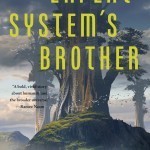 For those that missed it, The Expert System's Brother has been released by tor.com as a lovely novella which has been getting some very pleasant reviews (including this little piece in Locus). It's turned out very well, I think, and please consider giving it a look if you fancy.
For those that missed it, The Expert System's Brother has been released by tor.com as a lovely novella which has been getting some very pleasant reviews (including this little piece in Locus). It's turned out very well, I think, and please consider giving it a look if you fancy.
Today (ish, as some e‑copies went out earlier this week) sees the release of Redemption's Blade, though, and for that I've decided to do a Casting Call post, the first in a long old while (since Tiger & Wolf I think?). Blade has also been getting some nice press, including what I think is my second ever 5 star review in SFX (the current one with Danaerys on the cover) and a very nice write up in the non-partisan tor.com.
 For those coming in late, Redemption's Blade is a fantasy that picks up the personal pieces after the epic has been and gone. Celestaine was one of the heroes who defeated the Kinslayer, the insane demigod who erupted onto the surface of the world with his monsters and his slave armies ten years ago and set about ruining everything for everyone. If there was a way he could inflict misery on the world, he did so, and one of his foibles was to take the avian Aethani and have their wings torn off, each and every one, and consign them to the darkness of his iron mines. Now he's dead, and Celestaine is trying to find out who she is in peacetime. Trying to be a hero, she pledges to Amkulyah the Aethani prince that she'll restore his people, and sets off to track down magic of sufficient power to achieve it. In this she is aided (mostly) by Nedlam and Heno, a pair of Yorughan, the Kinslayer's warrior elite, who turned coat during the war. Nedlam is a cheerful bruiser but Heno is a Heart Taker, a blood mage complicit in all manner of evils. Along the way she locks horns with, helps and opposes a variety of others who are also trying to cut themselves a niche now the war's done, from duplicitous collectors of magical trinkets to former enemy generals to disgraced demigods on the scrounge.
For those coming in late, Redemption's Blade is a fantasy that picks up the personal pieces after the epic has been and gone. Celestaine was one of the heroes who defeated the Kinslayer, the insane demigod who erupted onto the surface of the world with his monsters and his slave armies ten years ago and set about ruining everything for everyone. If there was a way he could inflict misery on the world, he did so, and one of his foibles was to take the avian Aethani and have their wings torn off, each and every one, and consign them to the darkness of his iron mines. Now he's dead, and Celestaine is trying to find out who she is in peacetime. Trying to be a hero, she pledges to Amkulyah the Aethani prince that she'll restore his people, and sets off to track down magic of sufficient power to achieve it. In this she is aided (mostly) by Nedlam and Heno, a pair of Yorughan, the Kinslayer's warrior elite, who turned coat during the war. Nedlam is a cheerful bruiser but Heno is a Heart Taker, a blood mage complicit in all manner of evils. Along the way she locks horns with, helps and opposes a variety of others who are also trying to cut themselves a niche now the war's done, from duplicitous collectors of magical trinkets to former enemy generals to disgraced demigods on the scrounge.
Now obviously the below casting won't mean a thing to you if you haven't read the book, and should be taken with an absolute pinch of salt anyway — feel free to run your own casting call, and comment below with your suggestions for who you'd see in the roles if you like!

Celestaine — Gwendoline Christie

Voice of Heno — Ian McShane

Voice of Nedlam — Catherine Tate

Prince Amkulyah — Osric Chau

The Undefeated — Mark Hamill

Ralas — Anthony Rapp

Dr Catt — Francois Chau

Dr Fisher — Wen Jiang

Voice of General Thukrah (and MoCap) — Andy Serkis

Governor Adondra — Tamsin Greig

Archimandrite of Ilkand — Peter Mensah

Jocien Silvermort — Joseph Morgan

Kait Heguman — Simone Missick

Meddig — Karl Theobald

Mysterious Helmed Figure — Idris Elba
All photos are from the actors' imdb pages, use of which I hope is OK.
Photo credits are: Christie — Tim Whitby, McShane — John Russo Photography, Tate — Chris Haston, Osric Chau — BKHeadshots, Hamill — Gettyimages.com, Rapp — Dimitrious Kambouris, Francois Chau — uncredited, Jiang — Ben A Pruchnie, Serkis — imaginarium, Greig — Stuart Wilson, Mensah — Jason Merritt, Morgan — Amanda Elkins, Missick — Dana Patrick, Theobalf — Impossible Pictures, Elba — Dave J Hogan
Casting Call: Redemption’s Blade
 For those that missed it, The Expert System’s Brother has been released by tor.com as a lovely novella which has been getting some very pleasant reviews (including this little piece in Locus). It’s turned out very well, I think, and please consider giving it a look if you fancy.
For those that missed it, The Expert System’s Brother has been released by tor.com as a lovely novella which has been getting some very pleasant reviews (including this little piece in Locus). It’s turned out very well, I think, and please consider giving it a look if you fancy.
Today (ish, as some e-copies went out earlier this week) sees the release of Redemption’s Blade, though, and for that I’ve decided to do a Casting Call post, the first in a long old while (since Tiger & Wolf I think?). Blade has also been getting some nice press, including what I think is my second ever 5 star review in SFX (the current one with Danaerys on the cover) and a very nice write up in the non-partisan tor.com.
 For those coming in late, Redemption’s Blade is a fantasy that picks up the personal pieces after the epic has been and gone. Celestaine was one of the heroes who defeated the Kinslayer, the insane demigod who erupted onto the surface of the world with his monsters and his slave armies ten years ago and set about ruining everything for everyone. If there was a way he could inflict misery on the world, he did so, and one of his foibles was to take the avian Aethani and have their wings torn off, each and every one, and consign them to the darkness of his iron mines. Now he’s dead, and Celestaine is trying to find out who she is in peacetime. Trying to be a hero, she pledges to Amkulyah the Aethani prince that she’ll restore his people, and sets off to track down magic of sufficient power to achieve it. In this she is aided (mostly) by Nedlam and Heno, a pair of Yorughan, the Kinslayer’s warrior elite, who turned coat during the war. Nedlam is a cheerful bruiser but Heno is a Heart Taker, a blood mage complicit in all manner of evils. Along the way she locks horns with, helps and opposes a variety of others who are also trying to cut themselves a niche now the war’s done, from duplicitous collectors of magical trinkets to former enemy generals to disgraced demigods on the scrounge.
For those coming in late, Redemption’s Blade is a fantasy that picks up the personal pieces after the epic has been and gone. Celestaine was one of the heroes who defeated the Kinslayer, the insane demigod who erupted onto the surface of the world with his monsters and his slave armies ten years ago and set about ruining everything for everyone. If there was a way he could inflict misery on the world, he did so, and one of his foibles was to take the avian Aethani and have their wings torn off, each and every one, and consign them to the darkness of his iron mines. Now he’s dead, and Celestaine is trying to find out who she is in peacetime. Trying to be a hero, she pledges to Amkulyah the Aethani prince that she’ll restore his people, and sets off to track down magic of sufficient power to achieve it. In this she is aided (mostly) by Nedlam and Heno, a pair of Yorughan, the Kinslayer’s warrior elite, who turned coat during the war. Nedlam is a cheerful bruiser but Heno is a Heart Taker, a blood mage complicit in all manner of evils. Along the way she locks horns with, helps and opposes a variety of others who are also trying to cut themselves a niche now the war’s done, from duplicitous collectors of magical trinkets to former enemy generals to disgraced demigods on the scrounge.
Now obviously the below casting won’t mean a thing to you if you haven’t read the book, and should be taken with an absolute pinch of salt anyway – feel free to run your own casting call, and comment below with your suggestions for who you’d see in the roles if you like!

Celestaine – Gwendoline Christie

Voice of Heno – Ian McShane

Voice of Nedlam – Catherine Tate

Prince Amkulyah – Osric Chau

The Undefeated – Mark Hamill

Ralas – Anthony Rapp

Dr Catt – Francois Chau

Dr Fisher – Wen Jiang

Voice of General Thukrah (and MoCap) – Andy Serkis

Governor Adondra – Tamsin Greig

Archimandrite of Ilkand – Peter Mensah

Jocien Silvermort – Joseph Morgan

Kait Heguman – Simone Missick

Meddig – Karl Theobald

Mysterious Helmed Figure – Idris Elba
All photos are from the actors’ imdb pages, use of which I hope is OK.
Photo credits are: Christie – Tim Whitby, McShane – John Russo Photography, Tate – Chris Haston, Osric Chau – BKHeadshots, Hamill – Gettyimages.com, Rapp – Dimitrious Kambouris, Francois Chau – uncredited, Jiang – Ben A Pruchnie, Serkis – imaginarium, Greig – Stuart Wilson, Mensah – Jason Merritt, Morgan – Amanda Elkins, Missick – Dana Patrick, Theobalf – Impossible Pictures, Elba – Dave J Hogan
July 9, 2018
At the Eleventh Hour: The Arthur C Clarke Award shortlist 2018
Better late than never! I have been overwhelmed with books to read this year, and it was seriously looking as though I’d not get the Clarke’s shortlist in. The mid-range prognosis was helped by the fact that I’ve already read the nominees for the BFS Holdstock award (the one Tiger & Wolf picked up last year, ahem hem), so that buys precious time to read those books I’ve been sitting on for a while desperately wanting to read.
The Clarkes shortlist this year is pretty eclectic, from my very limited viewpoint, in that I’d literally read none of the above, and had only even been aware of 3 of the 6. The upside of which is, of course, that I’ve got to read several excellent books I would simply not have encountered otherwise. Such is one benefit of shortlists.
 Borne – Jeff Vandermeer, 4th Estate
Borne – Jeff Vandermeer, 4th Estate
Weirdly, I was just about to start in on Borne when the shortlist was announced, as it had been on my radar for a while. I’ll be frank: I’ve been a fan of Vandermeer since long before I got into print myself. He’s one of those writers I’ve admired for his weird fiction, for simply writing things that nobody else was every going to write, and in ways no other writer would dream of. This is even before his remarkable Southern Reach trilogy which have catapulted him to a much wider readership. That’s right, I was a Vandermeer fan before it was cool. Anyway, Borne is Vandermeer doing what he does so well, present a world that is absolutely bugnuts crazy, so bizarre it feels like it should be played for laughs and whimsy, and then telling a story that’s absolutely dead serious, gripping and emotionally punishing. It’s a trick very few writers can do (Nate Crowley’s The Death and Life of Schneider Wrack is one of the few books that seem in the same ballpark as most of Vandermeer’s) and in Borne we have a ruined city in a world torn up by runaway biotech where the greatest threat is… a building-sized flying bear. And that’s funny, right? It’s a comical thought, a bear the size of a small apartment complex just ballooning about the place. Except it is really, really not goddamn funny and Mord the Bear is a terrifying elemental force that would make any Kaiju go back into the ocean and stay there. In this city live Rachel, a scavenger, and her partner Wick who is an exiled and half-mad biotech. Rachel, in combing the sleeping Mord’s hair for flotsam, comes across the amorphous Borne, a creature of the vats, mercurial, innocent, but a very fast learner. The relationship between Rachel and Borne is the core of the book, as it starts off as her child, then protege, and then accelerates into something beyond human. Borne is perhaps one of the most effective looks at both an alien mind and a superhuman artificial intellect – endearing and frightening and awe-inspiring. And, because it’s Vandermeer, the story contains plenty of both humour and horror, meshing together like cogwheels. It is a truly bizarre read but the author’s personal genius means the reader can simultaneously appreciate the weirdness and not be alienated by it.
 American War – Omar el Akkad, Picador
American War – Omar el Akkad, Picador
Akkad is one of the listed authors I’d not encountered before, and this book was a particular pleasure, one of the two really gut-punchy emotional wringers of the list. This is a near-future story about an America where a government mandate to wean the country off fossil fuels was viewed as an attack on those southern starts still reliant on oil for their economies. Cue a new civil war as a handful of states rise up, starting with the assassination of the president, and degenerating into brutality and massacre on both sides. Except a handful of states was never going to go toe to toe with the mainstream US army, so the conflict degenerates into asymmetrical warfare, meaning ambushes, explosives, acts of terrorism… The scenario is not subtle, nor is it meant to be: taking the sort of conflict recent history has seen western armies get involved in, and making it a west-on-west, US-on-US fight is a literary bludgeon, but Akkad applies it with extreme precision to the reader’s joints and vulnerables through the medium of Sarat, the protagonist, a Southerner who loses kin, ends up in a camp and becomes radicalised by a series of brutal events and losses. Akkad pulls no punches, and Sarat is simultaneously monster and victim.
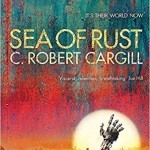 Sea of Rust – C. Robert Cargill, Gollancz
Sea of Rust – C. Robert Cargill, Gollancz
I’d had this one recommended to me a while back, which shows I really should be quicker to take people’s picks. Of all the list, this is perhaps the most traditional SF. It deals with a concept going all the way back to the Capeks’ RUR, the uprising of the robots against their creators. Except in this case the robots uprose some time ago, humans are consigned to histories and failing electronic memories, and the robots are their own worst enemy. That is the core novelty of the story: that the robots themselves are now struggling to avoid extinction at the hands of a couple of super-AIs which want only to amalgamate all the independent robot minds into their own all-controlling networks. The posthuman world of the robots is not all gleaming art deco chrome and electronic philosophy, it’s Mad Max meets Unforgiven except everyone’s made of metal. The protagonist, Brittle, was once a caregiver model and she (she presents as female) is our window both onto how the humans fell and the robots rose, and the looming next step of the mechanical world. There is a great deal of the Western to this book – a desperate journey of misanthropic and mutually suspicious travellers trying to escape pursuit and just perhaps to buy back something of what they’ve lost in their grim lives.
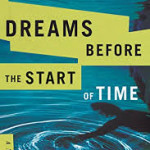 Dreams Before the Start of Time – Anne Charnock, 47North
Dreams Before the Start of Time – Anne Charnock, 47North
Anne Charnock is having a good year, frankly, having already picked up a BSFA Award at Easter (and a good career, having been shortlisted for a Kitchie and a Phillip K Dick award previously). She’s a thought-provoking and insightful writer and Dreams is a very different sort of book to the others on the list. It’s a gentle look at three generations of several interlinked families over the next hundred years or so, and its focus is very much speculation about the family structure and child-bearing, how these things may change (entirely believably) in the near future, and what knock-on effects those changes could have. It’s a gentle, sensitive book where the conflict comes from clashes of generations against the march of time and the progression of science, for good or ill. There are children from artificial wombs, children grown entirely from one parent’s genome, children from donor parents, all manner of variations all linking together and told in a series of elegant little vignettes. It’s a book that could have been bleak but instead is full of hope about the good things that can persist no matter what changes. Since reading, various scenes and moments of this book have come back to me, and I suspect they’ll keep on doing so for a while yet.
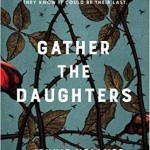 Gather the Daughters – Jennie Melamed, Tinder Press
Gather the Daughters – Jennie Melamed, Tinder Press
Well, if a book that is full of hope isn’t your thing… This book reminded me most of last year’s winner,Underground Railroad (even more than America War which I’d thought would be a more natural comparison) because like Whitehead’s book this was an incredibly painful read, by design. It is a book about terrible things being done to people who can’t defend themselves, and in this case it’s children on the receiving end and their parents on the other. There is a small island community whose religious community hold it as a matter of faith that the rest of the world is a wasteland where only the ‘wanderers’, the ruling menfolk, are permitted to go. Their sainted ancestors saved them from whatever horror overtook the rest of the world, and their ancestors had some very strict rules about how to live. And the book goes on, from the vantage point of various girls and young women, eking out the secret of what is at the heart of this community, with the characters talking in eliptical tones that give the reader every opportunity to decide to ignore what’s right there under their nose. And eventually you can’t kid yourself any more, and the vileness of the place can only be confronted. And, because it’s that sort of religious authoritarian society, and the people who run it are that sort of people, you also have to face the thought that no matter what these girls do, can they ever make anything better? Gather the Daughters is a real meat grinder of a read, emotionally speaking. It was hard, and yet I couldn’t put it down. A profoundly powerful piece of writing.
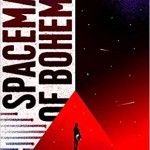 Spaceman of Bohemia – Jaroslav Kalfar, Sceptre
Spaceman of Bohemia – Jaroslav Kalfar, Sceptre
To a certain extent I’m bringing things full circle with this one because it touches on the sort of psychic morphospace that is Vandermeer’s playground. This is another book that I’d been meaning to get to, and to a great extent that’s because spiders. Here we learn about Jakub, the sole astronaut of the Czech Republic’s space program, sent to investigate a mysterious new dust cloud in the solar system after the major space-race powers have all passed. The story unravels both ways from this start point, with Jakub looking back at (and re-evaluating) his relationship with his wife and his personal background (his father was a Communist official and his family fell hard after the Velvet Revolution), and living through the mission which goes wrong very quickly in a variety of ways. It’s not his wife leaving or the systems failing so much as this goddamn spider-alien which turns up to eat his hazelnut spread. The contact and communication between Jakub and the alien, which may be entirely in his deteriorating imagination, or may be very real indeed, could have been the be-all and end-all of the book but there’s a lot of twists and plot in this book, with Jakub facing his past and also trying to find a new future for himself. The tone is quirky, drily humorous, reminding me a little of Josef Heller – the ability to talk about profoundly serious or disquieting things while simultaneously shrugging off the significance, making a joke of it. And as with Yossarian, you feel keenly that this is the protagonist’s defence mechanism, and it erodes gradually under the pressure of all the vicious twists of fate the world has in store for him. I really loved this book.
As for picking a winner, I’d not want to presume, and there is a very wide range of different takes on SF on offer, from the relatively traditional through the weird and on to the brutally cautionary (there’s a lot of comparison with Handmaid’s Tale on the quotes for Gather the Daughters, and for good reason), and then out the other side to Charnock’s calm introspection. Impossible to call.
June 30, 2018
Giveaway of the Decade
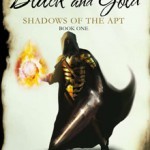
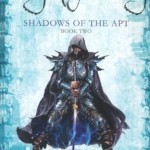
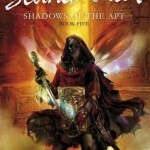
It’s been ten years.
*Ten years*
Empire in Blacks and Gold was published in 2008, this very month*, coming out to what I see in retrospect was actually quite a decent reception. Since when there’s been a lot of water under the bridge, and things have been going frankly better than I could ever have anticipated back then.
Actually that’s not strictly true because back in 2008 I knew precisely nothing and basically assumed I had won the world. By the time 2009 rolled around, of course, I’d received a fairly standard lesson for a starting author, which is that just because you’ve won a place on the treadmill it doesn’t mean you can just stand about.

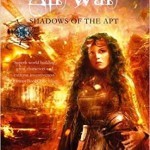
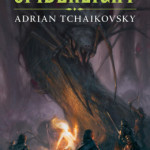
To commemorate the fact that I have yet to go professionally extinct, and indeed have managed to thrive and even expand into some neighbouring biomes, I am holding a little competition and/or a book giveaway depending on how you want to look at it. Up for grabs I have:
3 copies of Redemption’s Blade from Rebellion, to be published this month.
3 copies of The Expert System’s Brother, my novella from tor.com, ditto out this month
3 copies of Dogs of War from Head of Zeus, the new paperback edition.
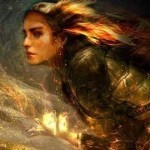
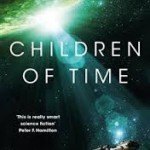
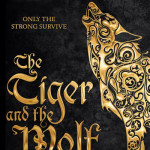
To throw your hat into the ring, please send me a message using the “Get in touch” panel to the next, headed “Decade Competition” (to minimise the chance of it getting lost in a spam folder” and giving either:
a species you’d like to see uplifted
a kinden not yet encountered in Shadows of the Apt.
Also please give:
Your postal address, because I can’t send books by telepathy. I will ensure these all get deleted after the competition.
Your preference in respect of the three books above. I can absolutely not guarantee you’ll get what you’re after, but I’ll try.
At the end of the month I will pick my favourites and dispatch books, and hopefully also manage to get a blog post up saying I’ve done so.

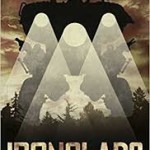

So I’ve rather self-indulgently peppered this post with “covers through the ages”, specifically the work of Dominic Harman, Jon Sullivan, Alan Brooks, Taylor Jacobson, Neil Lang, Maz Smit and Matt Griffin, whose talents have contributed significantly, I’m sure, to my success. Below is a little mosaic of just about every book out (ish). Not a bad ten years’ work.




*: as far as I recall, and my usual fount of wisdom, Amazon, only lists the 2012 edition.



